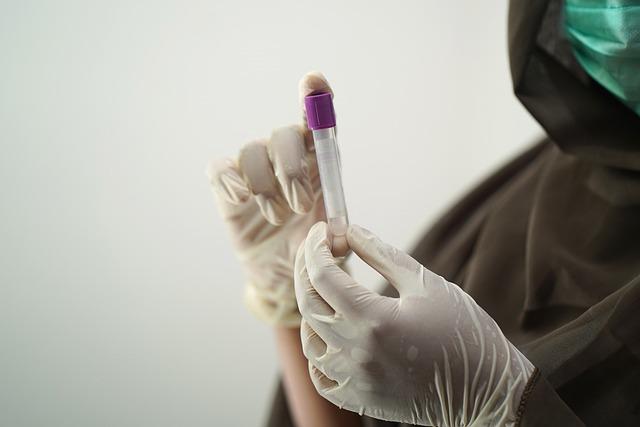Healthcare continues to be one of the most in-demand industries, offering a wealth of opportunities for those looking to make a difference in people’s lives. Among these opportunities, the role of a phlebotomy technician stands out as a vital, rewarding, and accessible career option. This article explores what it means to be a phlebotomy technician, the steps to entering this profession, and why it’s a smart choice for anyone seeking stability and growth in healthcare.
What Does a Phlebotomy Technician Do?
Phlebotomy technicians are healthcare professionals trained to draw blood from patients for medical tests, transfusions, research, or donations. While their primary responsibility is blood collection, they also play an essential role in:
- Ensuring patient comfort and safety during procedures.
- Properly labeling and storing blood samples.
- Maintaining sterile equipment to prevent contamination.
- Communicating with patients to ease anxiety and explain procedures.
The accuracy and professionalism of a phlebotomy technician directly impact the quality of diagnostic results and patient care.
Why Pursue a Career in Phlebotomy?
1. Growing Demand for Skilled Professionals
With the increasing prevalence of chronic diseases, aging populations, and expanded access to healthcare services, the need for diagnostic testing is rising. As a result, phlebotomy technicians are in high demand across hospitals, clinics, laboratories, and blood donation centers.
2. Quick Entry into the Workforce
Unlike other healthcare roles that require years of education, becoming a phlebotomy technician typically takes only a few months of training. Many programs can be completed in less than a year, making it an excellent choice for those eager to start working quickly.
3. Career Stability and Growth
Healthcare is a resilient industry, offering stability even during economic downturns. As a phlebotomy technician, you also have opportunities to advance into roles such as medical laboratory technician, nurse, or other specialized healthcare positions with additional training and education.
4. Rewarding Patient Interaction
Phlebotomy technicians often work directly with patients, making the role ideal for those who enjoy face-to-face interactions and providing compassionate care. This personal connection can be deeply fulfilling.
Steps to Becoming a Phlebotomy Technician
1. Research Training Programs
The first step is finding a reputable phlebotomy training program. Look for programs accredited by organizations like the National Accrediting Agency for Clinical Laboratory Sciences (NAACLS) or the American Society for Clinical Pathology (ASCP). These programs are often offered by community colleges, vocational schools, or healthcare institutions.
2. Meet Educational Requirements
Most programs require a high school diploma or GED. Some may also request basic knowledge of biology or healthcare terminology, but this is not always mandatory.
3. Complete a Phlebotomy Training Program
Training programs typically include both classroom instruction and hands-on clinical practice. Topics covered often include:
- Anatomy and physiology related to blood collection.
- Techniques for venipuncture and capillary puncture.
- Safety and infection control protocols.
- Proper handling and transportation of specimens.
4. Gain Certification
While not always required, certification significantly enhances job prospects and demonstrates your competence. Recognized certifications include:
- Certified Phlebotomy Technician (CPT) from the National Healthcareer Association (NHA).
- Phlebotomy Technician Certification (PTC) from the American Society of Phlebotomy Technicians (ASPT).
- Registered Phlebotomy Technician (RPT) from the American Medical Technologists (AMT).
Most certifications require passing an exam and may have prerequisites, such as completing a training program or logging a certain number of successful blood draws.
5. Seek Employment
After earning certification, you can start applying for positions. Phlebotomy technicians are employed in various settings, including hospitals, diagnostic labs, outpatient care centers, and blood donation facilities.
Skills and Traits for Success
To excel as a phlebotomy technician, you’ll need more than technical knowledge. Key skills and traits include:
- Attention to Detail: Precise labeling and handling of specimens are critical to ensure accurate diagnostic results.
- Dexterity: Proficiency in using needles and equipment is essential to minimize patient discomfort.
- Communication Skills: Explaining procedures and calming nervous patients are vital aspects of the job.
- Compassion: A caring demeanor can make a significant difference in patients’ experiences.
- Adaptability: The ability to work in fast-paced or high-stress environments is valuable, especially in hospital settings.
Challenges and How to Overcome Them
Like any healthcare role, phlebotomy has its challenges. These include:
- Handling Nervous Patients: Some individuals may fear needles or blood draws. Patience and effective communication can help ease their concerns.
- Managing High Workloads: In busy settings, phlebotomy technicians may see many patients daily. Staying organized and maintaining focus is key.
- Exposure to Risks: Following strict safety protocols minimizes the risk of exposure to bloodborne pathogens.
By developing resilience and adhering to best practices, you can navigate these challenges effectively.
The Future of Phlebotomy
The field of phlebotomy is evolving alongside advancements in healthcare technology. Emerging trends include:
- Increased Use of Automation: Automated systems for specimen labeling and data entry are streamlining workflows, allowing technicians to focus more on patient care.
- Telehealth Integration: Mobile phlebotomy services are becoming more common, enabling patients to receive blood collection services at home.
- Expanding Roles: As healthcare teams become more collaborative, phlebotomy technicians may take on additional responsibilities, such as assisting with laboratory tasks or patient intake.
Conclusion
Becoming a phlebotomy technician offers a fulfilling career path with numerous benefits, from quick entry into the workforce to meaningful patient interactions. With growing demand, opportunities for advancement, and the chance to make a tangible difference in healthcare, this profession is an excellent choice for those seeking a stable and rewarding career. By following the outlined steps and embracing continuous learning, you can build a successful future as a phlebotomy technician and contribute to the well-being of countless individuals. If you’re ready to take the next step toward becoming a phlebotomy technician, explore the phlebotomy technician program at CDE Career Institute. Their comprehensive training program are designed to prepare you for success in this growing field.

